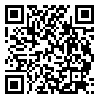Volume 6, Issue 3 (2025)
san 2025, 6(3): 63-86 |
Back to browse issues page
Download citation:
BibTeX | RIS | EndNote | Medlars | ProCite | Reference Manager | RefWorks
Send citation to:



BibTeX | RIS | EndNote | Medlars | ProCite | Reference Manager | RefWorks
Send citation to:
Khademi E, Abad M, Mahdavi M J, Kermani M. Exploring Identity in Arabic and Persian Young Adult Novel Based on Erik Erikson's Theory
(Case Study: Cappuccino and Call Me Ziba)
. san 2025; 6 (3) :63-86
URL: http://san.khu.ac.ir/article-1-354-en.html
URL: http://san.khu.ac.ir/article-1-354-en.html
1- Department of Arabic Language and Literature, Faculty of Letters and Humanities, Ferdowsi University of Mashhad
2- Department of Arabic Language and Literature, Faculty of Letters and Humanities, Ferdowsi University of Mashhad ,mabad@ferdowsi.um.ac.ir
3- Department of Persian Language and Literature, Faculty of Letters and Humanities, Ferdowsi University of Mashhad
4- Department of Social Sciences, Faculty of Letters and Humanities, Ferdowsi University of Mashhad
2- Department of Arabic Language and Literature, Faculty of Letters and Humanities, Ferdowsi University of Mashhad ,
3- Department of Persian Language and Literature, Faculty of Letters and Humanities, Ferdowsi University of Mashhad
4- Department of Social Sciences, Faculty of Letters and Humanities, Ferdowsi University of Mashhad
Abstract: (1672 Views)
In Erik Homburger Erikson's theory of psychosocial development, adolescence is the fifth stage. The main problem of this stage is the identity crisis, although not in its critical sense. In this article, identity is explored based on this theory in the Arabic young adult novel Cappuccino and the Persian Call Me Ziba. The novel Cappuccino is written by Fatima Sharafeddin, a Lebanese writer, and Call Me Ziba, is written by Farhad Hassanzadeh, an Iranian writer. The atmosphere of both novels is narrated in contemporary era. The main characters in Cappuccino are a young girl and a young boy, and the main character in Call Me Ziba is a young girl. These characters are involved in challenges and try to solve them. In Cappuccino, family violence of men against women is the main theme. Call Me Ziba portrays the most acute life conditions for adolescents and the possibility of getting rid of them. Paying attention to adolescence in order to form a successful identity has been the concern of many non-literary researches, but in literary studies, less attention has been paid to this period and the notion of identity; Therefore, in this research, the two novels are examined by using Erikson's theory, descriptive-analytical method, and the comparative literature approach. The results indicate that in the novels Cappuccino and Call Me Ziba, adolescent characteristics are placed in three categories based on Erikson's psychosocial development theory: 1) Identity crisis; 2) Identity-seeking, which itself includes the subcategories of identification, receiving social support and adolescent protest against the value system of adults in adolescence; and 3) Fidelity. Upon examining the place of identity and identity challenges of youngs in the novels Cappuccino and Call Me Ziba, it can be concluded that encouragement to patience, love of family, respect for elders, support of family members, understanding of family's unfavorable economic situation, and fidelity to family members are emphasized a lot.
Keywords: identity, Arabic Narratology, Young Adult Novel, Erik Homburger Erikson, Fatima Sharafeddin, Farhad Hassanzadeh, Cappuccino, Call Me Ziba
Subject:
تطبیقیه
ePublished ahead of print: 2025/04/20
ePublished ahead of print: 2025/04/20
References
1. حسنزاده، فرهاد. (1394). زیبا صدایم کن. تهران: کانون پرورش فکری کودکان و نوجوانان.
2. خسرونژاد، مرتضی. (1387). دیگر خوانیهای ناگزیر. تهران: کانون پرورش فکری کودکان و نوجوانان.
3. شاملو، سعید. (1372).مکتبها و نظریهها در روانشناسی شخصیت. چاپ چهارم. تهران: نشر فجر.
4. شرفالدین، فاطمه. (2017). کاپوتشینو، الطبعه الثانیه. شارقة: کلمات.
5. علیخانی، علیاکبر. (1386). هویت و بحران هویت. چاپ دوم. تهران: پژوهشگاه علوم انسانی، فرهنگ و مطالعات اجتماعی.
6. کارور، چ. (1387). نظریه های شخصیت. (مترجم: احمد رضوانی). چاپ دوم. مشهد: به نشر.
7. کوتیه، إی جیمس، و لیفین، جی تشارلز. (2021). تکوین الهویة و الشباب و التنمیة. المملکة العربیه السعودیه: دار الکتاب التربوی.
8. گیدنز، آ. (1378). تجدد و تشخص: جامعه و هویت شخصی در عصر جدید. (مترجم: ناصر موفقیان). تهران: نشر نی.
9. میلر، پ. (1393). نظریههای روانشناسی رشد از کودکی تا بزرگسالی. (مترجم: پرویز شریفی درآمدی و محمد رضا شاهی). تهران: نشر ویرایش.
10. سروش، وجیهه، و امیري، جهانگیر، وسلیمي، امیر، و معروف، یحیی. (1401). روابط عاطفی در دو رمان «أنا أحیا» و «عادت میکنیم» بر اساس نظریه هرم عشق استرنبرگ. زبان و ادبیات عربی، دوره 14، شماره 3، صص 84-99. DOI:10.22067/jallv14.i3.2209-1188
11. السلطان، ابتسام محمود محمد سلطان. (2004). تطور الهویة و علاقته بن مو الأحکام الخلقیة لدی المراهقین. رساله ماجستیر، جامعه موصل، موصل.
12. کوتس، ک. (1400). ادبیات نوجوان بزرگ شدن در حوزه نظریه. (مترجم: محمدجواد مهدوی). هورام، دوره 1، شماره 1، صص 43-59.
13. Bezci, Şenol .(2008). Youth in crisis: an eriksonian interpretation of adolescent identity in "franny", Novitas-ROYAL (Research on Youth and Language),2(1). 1-12.
14. Côté, James E. (2018), The enduring usefulness of Erikson's concept of the identity crisis in the 21st century: an analysis of student mental health concerns. Identity,18(4). 251-263. DOI: 10.1080/15283488.2018.1524328. [DOI:10.1080/15283488.2018.1524328]
15. Erikson, Erik. H. (1963). Childhood and Society. New York: Norton.
16. Erikson, Erik. H. (1964). Insight and responsibility. New York: Norton.
17. Erikson, Erik. H. (1968a). Identity and Identitydiffusion. New York: Wiley.
18. Erikson, Erik. H. (1968b). Identity: Youth and crisis. New York: Norton
19. Erikson, Erik. H. (1975). Life history and the historical moment.New York: Norton.
20. Evans, R. (1967). Dialogue with Erik Erikson. New York: Harper & Row.
21. Ryckman, Richard M. (2008). Theories of Personality. 9th Edition. USA: Thomson Wadsworth.
22. Schachter, Elli. (2014). Multiple identities as viewed by Eriksonian theory and its critics: A psychological perspective with relevance to contemporary Jewish education. International Journal of Jewish Education and Research, 2013 (5-6). 71-90.
23. Trites, Seelinger Roberta. (2000). disturbing the Universe: Power and Repression in Adolescent Literature. Iowa City: University of Iowa Press.
Send email to the article author
| Rights and permissions | |
 |
This work is licensed under a Creative Commons Attribution-NonCommercial 4.0 International License. |







